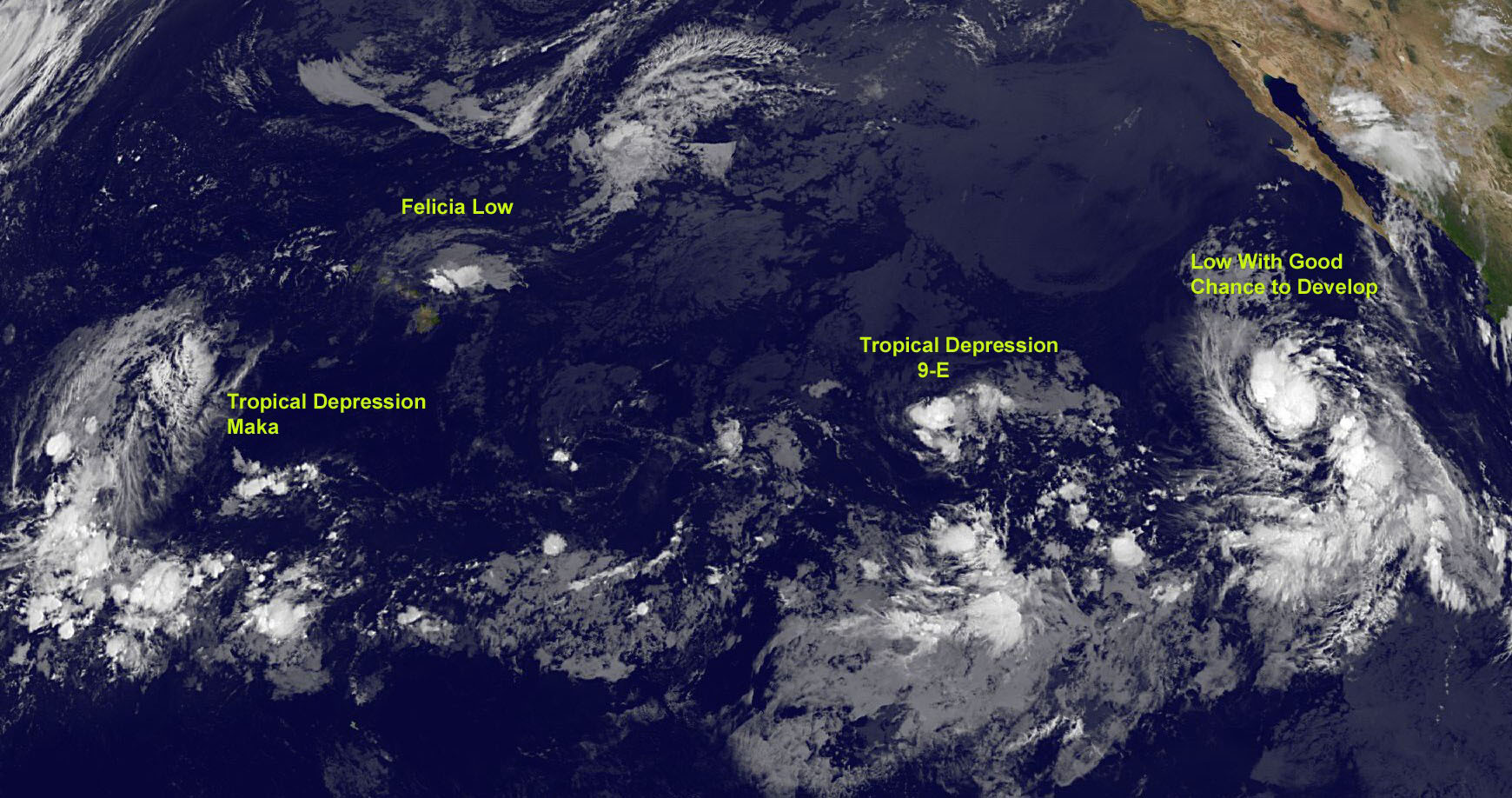|
Tropical Cyclones In 2009
Throughout 2009, 130 tropical cyclones formed in bodies of water known as tropical cyclone basins. Of these, 81 were named, including a subtropical cyclone in the South Atlantic Ocean, by various weather agencies when they attained maximum sustained winds of . The strongest storm of the year was Typhoon Nida in the Western Pacific Ocean. The deadliest and costliest storm of the year was Typhoon Morakot (Kiko) causing 789 fatalities through its track in the Philippines, Japan, Taiwan, China, and the Korean peninsula. Throughout the year, twenty-one Category 3 tropical cyclones formed, including five Category 5 tropical cyclones in the year. Tropical cyclones are primarily monitored by a group of ten warning centres, which have been designated as a Regional Specialized Meteorological Center (RSMC) or a Tropical Cyclone Warning Center (TCWC) by the World Meteorological Organization. These are the United States National Hurricane Center (NHC) and Central Pacific Hurricane Ce ... [...More Info...] [...Related Items...] OR: [Wikipedia] [Google] [Baidu] |
Tropical Depression Auring (2009)
Tropical Depression Auring formed as a tropical disturbance late on December 30, 2008, to the southeast of Manila in the Philippines. Over the next few days the disturbance gradually developed before early on January 3, the Philippine Atmospheric, Geophysical and Astronomical Services Administration (PAGASA) and the Japan Meteorological Agency (JMA), reported that the disturbance had intensified into the first tropical depression of the season with PAGASA assigning the name Auring to the depression. As the Depression was moving into a high level of vertical wind shear, it did not develop any further and late on January 5 as the baroclinic zone approached Auring, it was downgraded to an area of low pressure by the PAGASA before the JMA followed suit the next day as it was declared as dissipated by the JTWC. Heavy rain from Auring produced severe flooding in the eastern Philippines. Two people were killed and nine others were left missing. A total of 305 homes were destroyed and an ... [...More Info...] [...Related Items...] OR: [Wikipedia] [Google] [Baidu] |
World Meteorological Organization
The World Meteorological Organization (WMO) is a specialized agency of the United Nations responsible for promoting international cooperation on atmospheric science, climatology, hydrology and geophysics. The WMO originated from the International Meteorological Organization, a nongovernmental organization founded in 1873 as a forum for exchanging weather data and research. Proposals to reform the status and structure of the IMO culminated in the World Meteorological Convention of 1947, which formally established the World Meteorological Organization. The Convention entered into force on 23 March 1950, and the following year the WMO began operations as an intergovernmental organization within the UN system. The WMO is made up of 193 countries and territories, and facilitates the "free and unrestricted" exchange of data, information, and research between the respective meteorological and hydrological institutions of its members. It also collaborates with nongovernmental part ... [...More Info...] [...Related Items...] OR: [Wikipedia] [Google] [Baidu] |
January 2009 Fiji Floods
During January 2009, Fiji was impacted by a series of consecutive weather events, that caused severe flooding in various parts of the island nation. The floods were caused by a number of intense synoptic-scale weather features, which included an active monsoonal trough, the South Pacific Convergence Zone, Tropical Depression's 04F and 05F as well as Tropical Cyclone Hettie. These weather features combined to cause strong winds, considerable rainfall, as well as severe flooding across the island nation throughout the month. Meteorological synopsis During January 2009, Fiji was impacted by a series of consecutive weather events, that caused severe flooding in various parts of the island nation. These events included: an active monsoonal trough, an enhanced South Pacific Convergence Zone, Tropical Depression's 04F and 05F as well as Tropical Cyclone Hettie. These weather features combined caused strong winds, considerable rainfall, as well as, severe flooding across the island nat ... [...More Info...] [...Related Items...] OR: [Wikipedia] [Google] [Baidu] |


